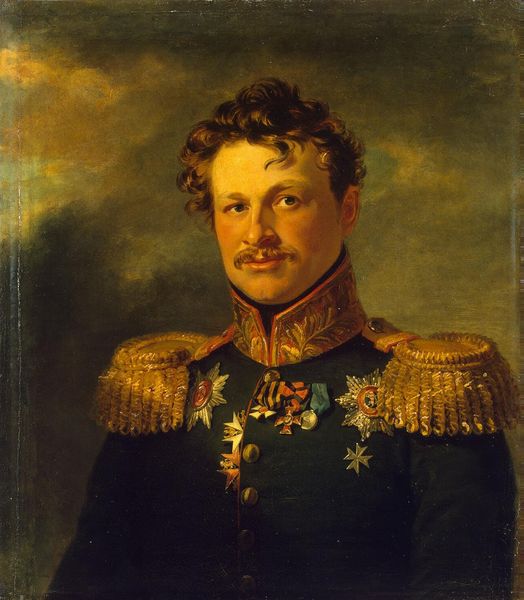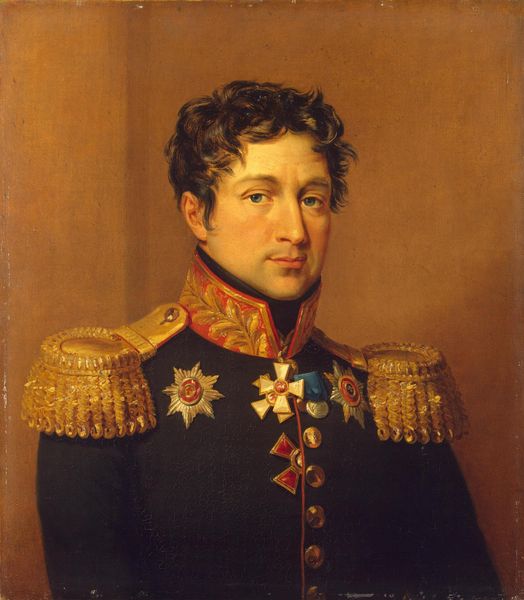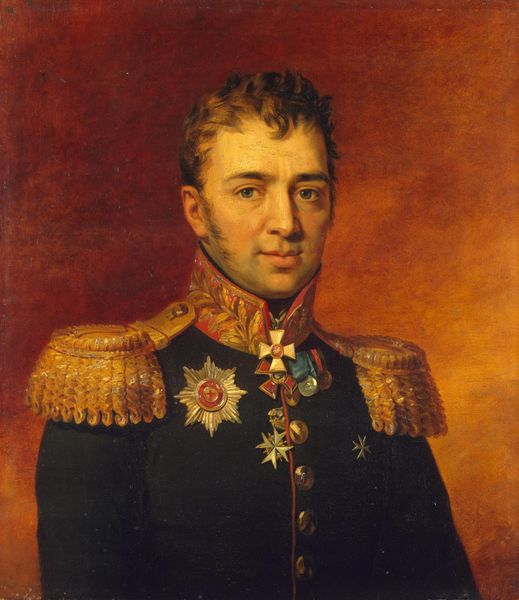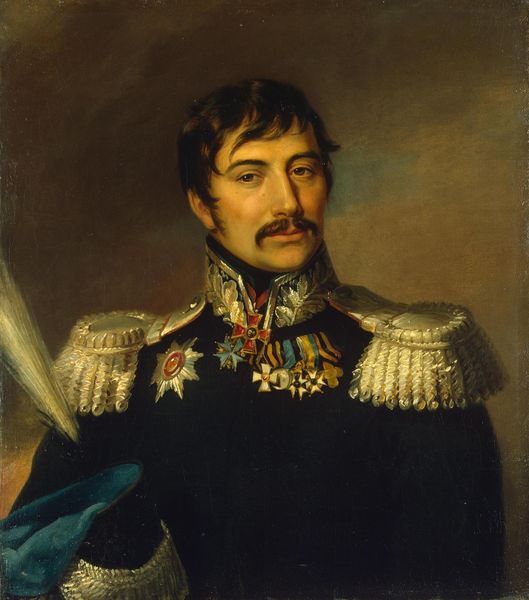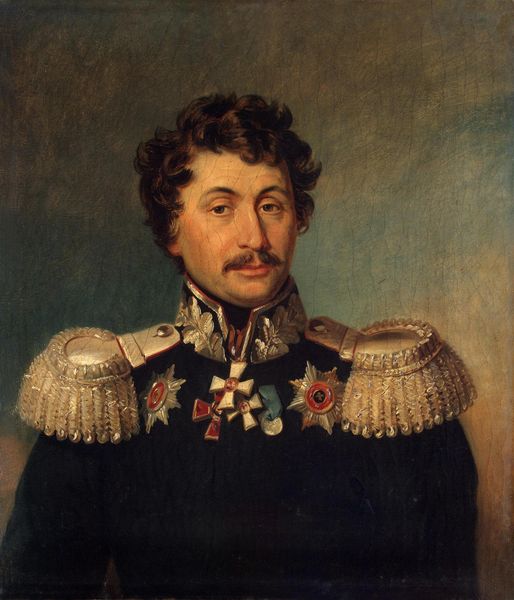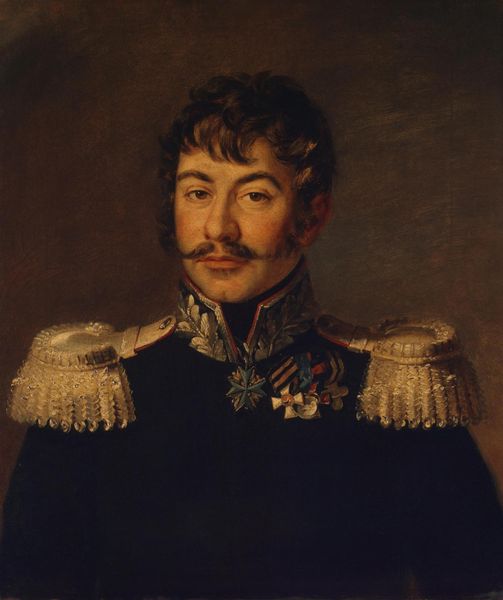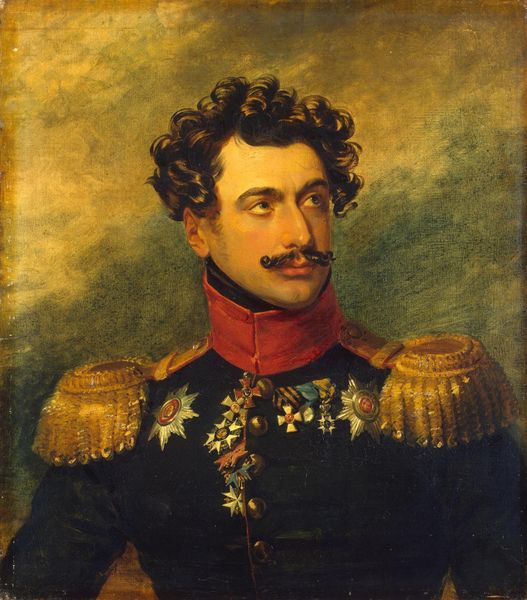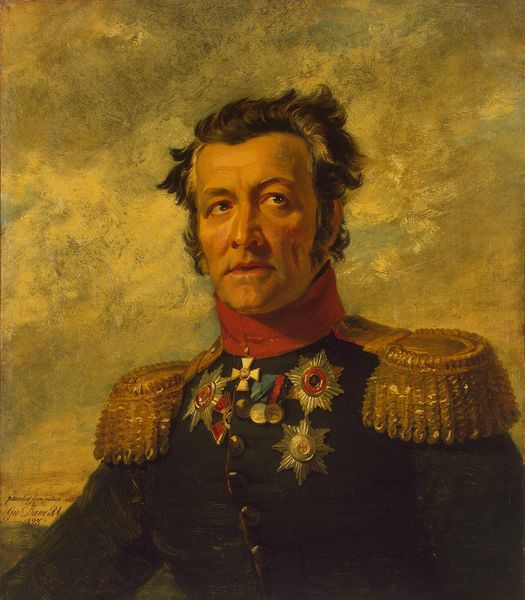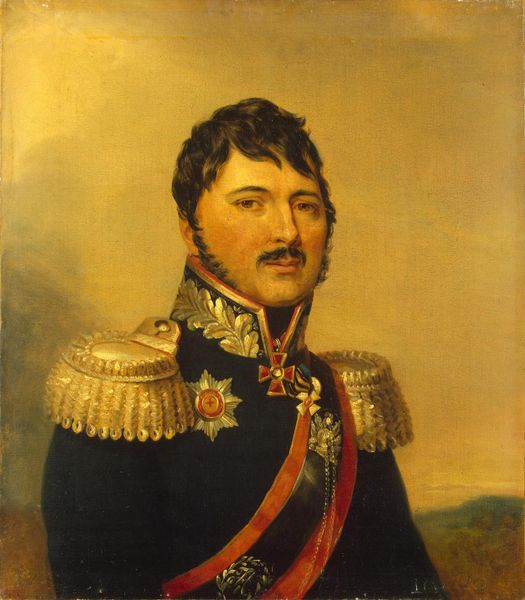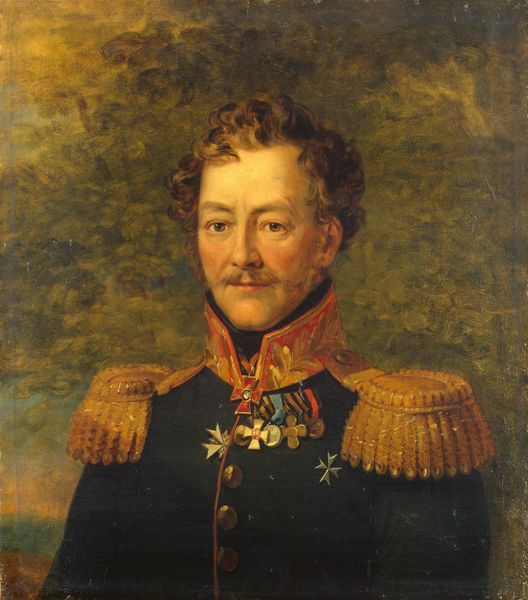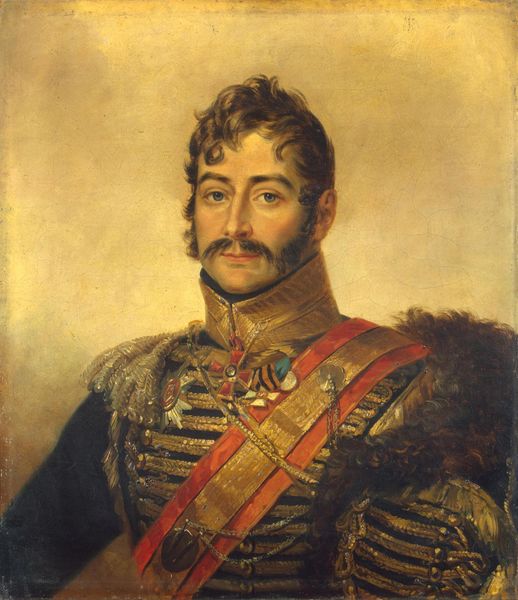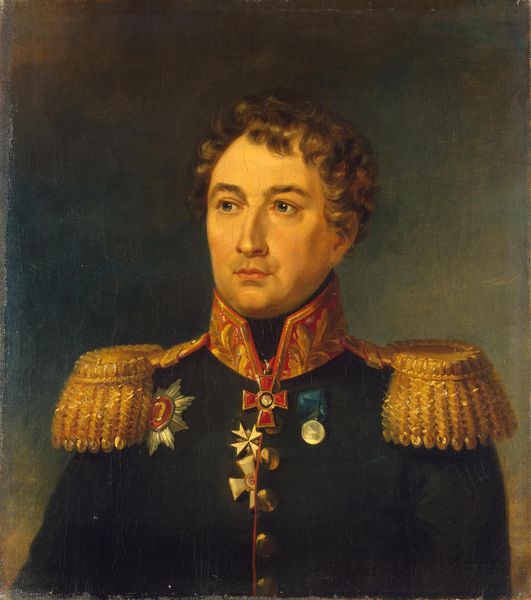
painting, oil-paint
#
portrait
#
portrait
#
painting
#
oil-paint
#
romanticism
#
history-painting
Copyright: Public domain
Curator: This is a portrait of Cyprian Kreutz, a Russian General, painted by George Dawe in 1826. It resides here in the Hermitage Museum. What are your immediate impressions? Editor: Dark, commanding...melancholy. The muted color palette emphasizes the figure, but the sky behind him seems turbulent. Almost as if mirroring his internal state. Curator: Indeed. Notice how Dawe utilizes light and shadow. The subject's face is illuminated, drawing your gaze to his thoughtful expression, but the shadow adds a layer of seriousness. The overall composition is balanced, almost symmetrical. It directs your attention right towards Kreutz’s awards and stars. Editor: Precisely, it is like a visual codex—each medal signifies something beyond mere decoration. Those objects signal bravery, loyalty and the weight of leadership, amplified by the painting's realistic details in the rendering of metal and fabric. Curator: The choice of Romanticism further adds complexity. It emphasizes individualism but also emotion. It’s a statement about the heroic and the burden of it. Look closer at the eyes; he isn't just a General; he is a man shaped by conflict. Editor: He becomes an archetype through the artist's hand, a representation of dedication to Mother Russia! These historical portraits reinforce national narratives, which is a heavy undertaking considering the ever-shifting social values and their impact on tradition and cultural memory. Curator: I agree. Dawe's portrait provides insight into individual psychology but reflects the cultural narrative of his time, reminding us that symbols can carry diverse interpretations and historical layers. Editor: A single painting can evoke so many interpretations. We can see how visual structure alone holds the key to unlock broader meaning! Curator: Absolutely, it enriches our understanding of ourselves, our societies, and the continuing power of symbolism through the centuries. Editor: It's like finding an old map to feelings and cultural history we thought were lost.
Comments
No comments
Be the first to comment and join the conversation on the ultimate creative platform.
